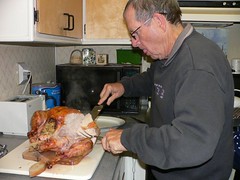The blending modes feature is one of Photoshop’s most undervalued tools for Photographers. Blending modes can be used to alter the ways in which each layer interacts with the layers below it, allowing for endless possibilities when it comes to setting the right tone or adding artificial lighting.

Graphic designers and digital illustrators use blending modes all the time to create interesting lighting effects or textures; however, most digital photographers don’t realize that blending modes can be useful when working with photographs, too. The right combination of blending modes can set a dramatic tone that is otherwise difficult to achieve.
… Continue reading Ultimate Guide To Blending Modes in Photoshop



 If you get it right photographing your children can produce pictures you’ll want to treasure for years to come, whether it’s snaps of their tenth birthday displayed in a professional coffee table book or the embarrassing shot of Timmy wearing his underpants on his head that you choose to keep lovingly displayed where all your visitors can see it. But it can be a frustrating process, children are rarely still for any length of time and as they get older often get either camera-shy or obsessed with making that face that involves rolling their eyes back into their head and sticking out their tongue.
If you get it right photographing your children can produce pictures you’ll want to treasure for years to come, whether it’s snaps of their tenth birthday displayed in a professional coffee table book or the embarrassing shot of Timmy wearing his underpants on his head that you choose to keep lovingly displayed where all your visitors can see it. But it can be a frustrating process, children are rarely still for any length of time and as they get older often get either camera-shy or obsessed with making that face that involves rolling their eyes back into their head and sticking out their tongue. I’ve got a nice roundup here of food photography sources with a ton of great tips, tutorials, and videos for making food look tasty on camera. How seriously you take this probably depends to some extent on whether you’ve ever heard the term “food stylist.”
I’ve got a nice roundup here of food photography sources with a ton of great tips, tutorials, and videos for making food look tasty on camera. How seriously you take this probably depends to some extent on whether you’ve ever heard the term “food stylist.” I spent this past weekend in Chicago and, as you may know, it was FREEZING in Chicago this past weekend. But since a mere 6 months ago I was living in Alaska I know that extreme cold doesn’t mean I can’t take my camera out and I now have some lovely photos of very cold Chicago dwellers. For those of you that have never yet ventured out with your camera at 25 below but think you might be brave enough this winter here are a few tips:
I spent this past weekend in Chicago and, as you may know, it was FREEZING in Chicago this past weekend. But since a mere 6 months ago I was living in Alaska I know that extreme cold doesn’t mean I can’t take my camera out and I now have some lovely photos of very cold Chicago dwellers. For those of you that have never yet ventured out with your camera at 25 below but think you might be brave enough this winter here are a few tips:






